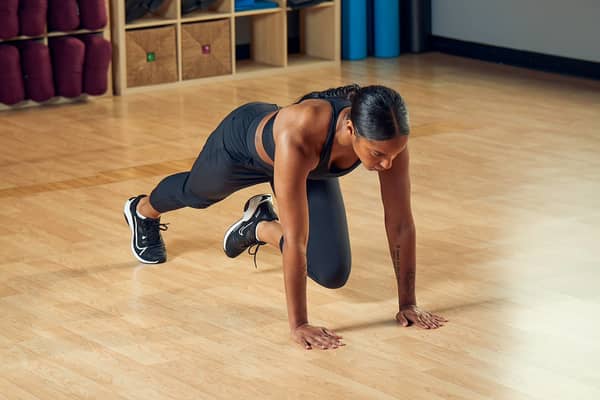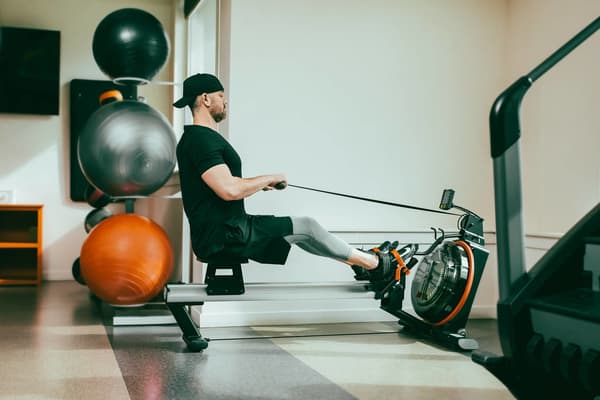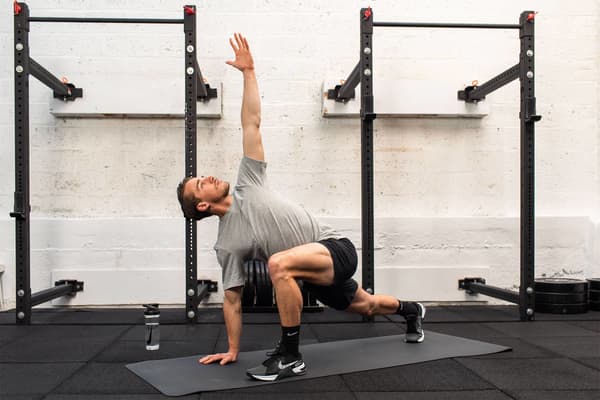Everything You Need to Know About Rucking: What It Is, Risks, Benefits and How to Do It
Sport & Activity
Read on to learn about how to incorporate this military training technique into your fitness routine.

If you're looking for a workout with an intensity somewhere between walking and running, rucking might be the answer. Below, experts explain what rucking is, the possible benefits (and risks) of the activity and tips to get started.
What Is Rucking?
Rucking is simply walking or hiking while carrying a weighted rucksack or backpack. It's a staple of international military training, as soldiers must be able to carry weapons, food and other supplies for long distances, according to a 2010 paper in the Australian Army Journal.
Walking with a weighted pack can be beneficial for active civilians, too. Not to mention, it's an accessible way to build strength and improve endurance.
(Related: What Is Power Walking—and Do You Need to Add It to Your Weekly Workouts?)
The Benefits of Rucking
Since rucking involves walking, it qualifies as cardio exercise. But the addition of a weighted pack takes the intensity to a new level.
"The load significantly increases the difficulty by causing muscles to work harder to maintain your pace—similar to the effect of walking or running uphill versus walking or running on level ground", Rob Shaul, CSCS, said.
That extra effort will have your heart and lungs working hard, making rucking an effective activity for building aerobic fitness. In fact, healthy men (i.e. men who haven't been diagnosed with a chronic condition) saw significant improvements in maximal oxygen uptake or VO2 max—a common measure of aerobic fitness—following a 10-week rucking programme, according to a 2019 study in the Journal of Strength and Conditioning Research.
Carrying a weighted pack also turns an ordinary walk into a strength exercise. Practically every muscle—from your shoulders to your feet—is involved, said Stew Smith, CSCS, a military fitness training coach and former Navy SEAL.
The glutes, hips, quads, hamstrings, calves, shins and feet are responsible for the walking motion. However, you also need tremendous strength in the lower back, neck and shoulders to brace against the load, Smith said. In short, rucking is a serious total-body workout.
(Related: 7 Variations of Glute Bridges That Will Shake Up Your Next Workout)
The Risks of Rucking
Though rucking is fairly low impact—making it easier on the joints than high-impact activities such as running, Smith said—there are still risks. In particular, rucking too far, too often, or carrying a load that's too heavy for your current ability level, may cause lower-body, lower-back, shoulder or neck pain.
It's also important to wear shoes with plenty of ankle support. Especially if you're rucking on uneven terrain, he added. Without proper footwear, walking with a heavy load can cause blisters and foot pain, and increase your odds of rolling an ankle. Strength-training exercises that target the muscles you use while rucking may also help you avoid injury.
1.Build a Foundation
Even if you already have a strength-training routine, it may be useful to spend a few weeks building up the muscles you'll rely on for rucking.
"A combination of lunges, goblet squats and kettlebell Romanian deadlifts are excellent lifts to add in to help build the strength and durability that's required for rucking", Smith said.
(Related: Your Guide to Side Lunges: Benefits, Technique and Variations to Try)
Aim to lift two to three days per week—and doing two to three sets of 10 reps per move is a great place to start. As you advance in your lifting and rucking, you can increase your weight and switch to five sets of five reps, Smith said. But, consider working with a personal trainer or strength and conditioning specialist to help ease you into programming.
2.Get Equipment
There are speciality rucking packs you can buy. Smith's favourite is the military-grade ALICE pack. But there are packs of all shapes and sizes on the market, so you can find the one that fits your needs.
If you already have a backpack, consider using it. "Nearly any solid backpack will work for rucking", Shaul said.
There are also speciality rucking weights, but many people simply put sand or gravel in a plastic bag or use weight plates or dumbbells. Just make sure you wrap any weights in a towel so the hard edges won't dig into your back, Shaul said.
3.Start Light
Load up your pack with no more than 10 percent of your body weight for your first several rucks, Smith said. Progress by adding 10 to 15 percent every one to two weeks, provided you're feeling good, he said. Work your way up to carrying 25 percent of your body weight, if you can.
4.Nail the Right Placement
The placement of the load is important.
"Ideally, and this is counterintuitive, the weight will be placed high in the back, between the athlete's shoulder blades", Shaul said. This lessens the strain on your hips and lower back.
He suggested placing a volleyball or folded towel in the bottom of the pack before putting the load in to help elevate it so it's in between your shoulder blades. Adjusting the pack straps so the load sits high will also help.
5.Find Your Mileage and Frequency
Start with a distance that feels manageable. For someone who walks for cardio, first check that you can walk at least one mile a day without pain or struggle. From there, Smith suggests rucking one mile every other day, with an unweighted walk in between rucking days. Add 10 to 15 percent to your mileage each week if you're ready to progress.
Words by Lauren Bedosky











